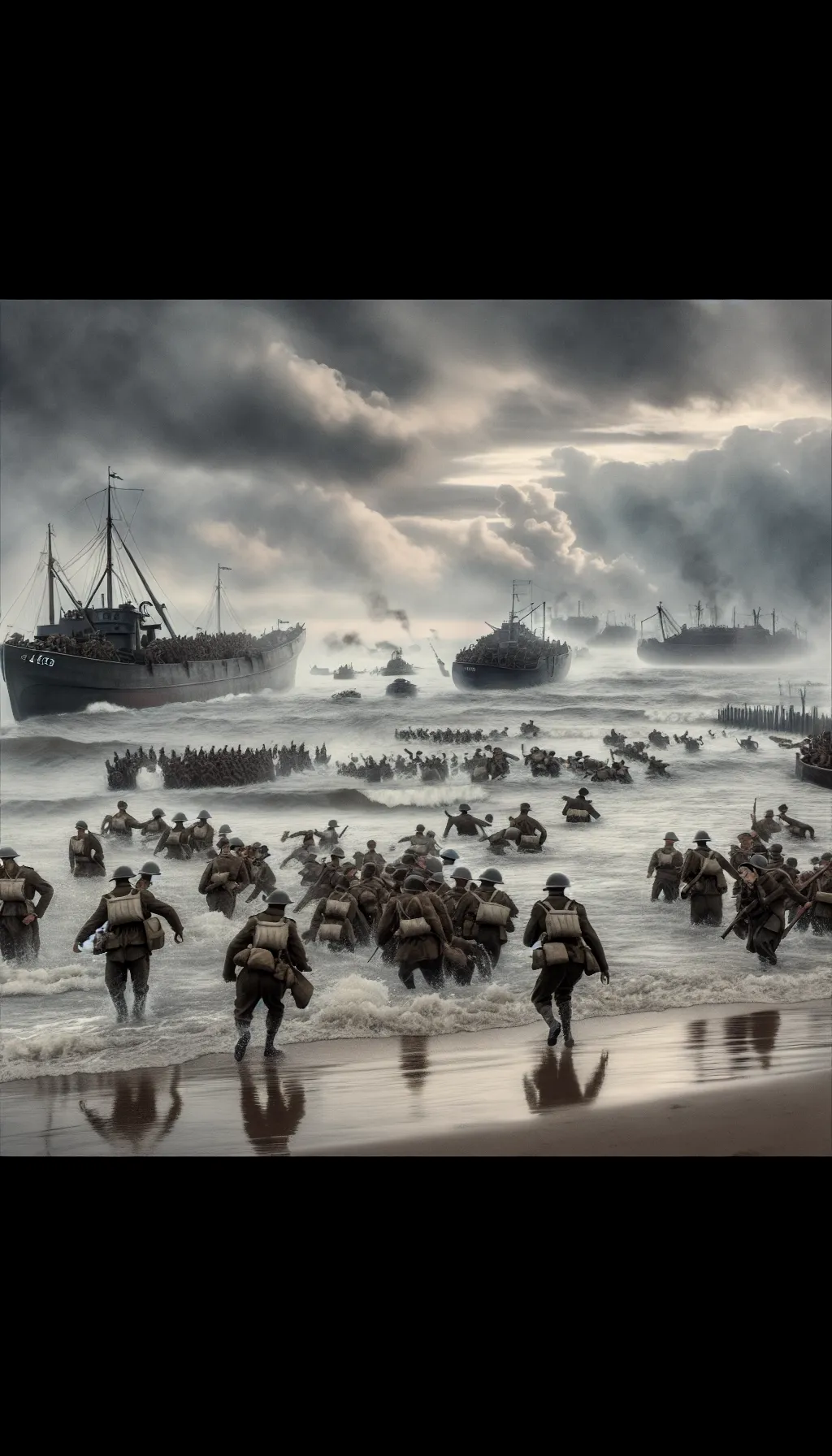France – The Miracle of Dunkirk – June 4, 1940 and Beyond
TLDR;
- Event: Operation Dynamo, the evacuation of Allied forces from Dunkirk, concluded on June 4, 1940, rescuing over 338,226 soldiers from the advancing German army.
- Strategy: A flotilla of over 800 boats, including military and civilian vessels, braved the English Channel under constant Luftwaffe bombardment to save the stranded troops.
- Challenges: Despite the success, thousands of soldiers were left behind, and significant military equipment was abandoned, impacting future British defense efforts.
- Legacy: The Dunkirk evacuation became a symbol of heroism and resilience, rallying the Allied forces during World War II.
–
Story
The roar of engines and the cries of desperate men filled the air as the last boats pulled away from the beaches of Dunkirk. It was June 4, 1940, and Operation Dynamo, the audacious evacuation of Allied forces, was drawing to a close. Against all odds, over 338,226 soldiers had been rescued from the clutches of the advancing German army over several days, with some smaller rescues continuing into the early hours of June 5.

In the spring of 1940, the German Blitzkrieg had swept through France, leaving the British Expeditionary Force and other Allied troops trapped against the coast. With their backs to the sea and the enemy closing in, hope seemed lost. But in a daring move, the British launched Operation Dynamo, a plan to evacuate the stranded soldiers using every available vessel.
The operation was a race against time. Under constant bombardment from the Luftwaffe and with the German army’s advance deliberately slowed by Hitler’s controversial ‘Halt Order’ from May 24–26, a flotilla of over 800 boats, including Royal Navy destroyers, fishing boats, and civilian vessels, braved the treacherous waters of the English Channel. While the majority of soldiers were evacuated by military ships, the civilian ‘Little Ships’ played a crucial symbolic role, ferrying troops from the beaches to larger ships offshore. The courage and determination of those involved turned what could have been a catastrophic defeat into a story of heroism and resilience.
As the last of the boats departed on June 4, the beaches of Dunkirk were not entirely silent, as some rearguard troops continued fighting until their surrender. The evacuation had been a success, but it came at a cost. Thousands of soldiers were left behind, and nearly all heavy weapons, vehicles, and supplies were abandoned, later hampering British defense efforts. Yet, the spirit of Dunkirk would become a symbol of unity and perseverance, a rallying cry for the Allied forces in the dark days that followed.
–
| Would a different strategy have changed the outcome of Dunkirk? |